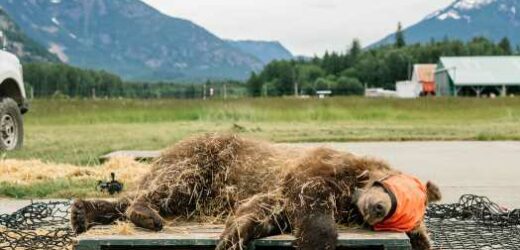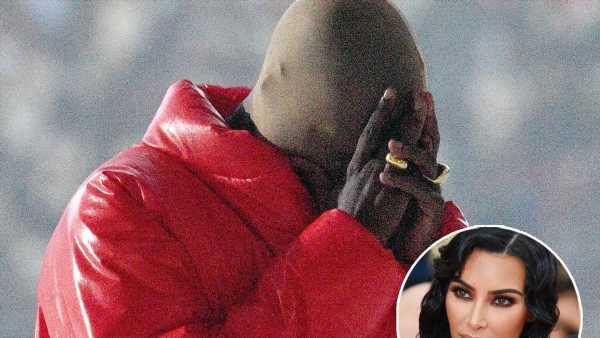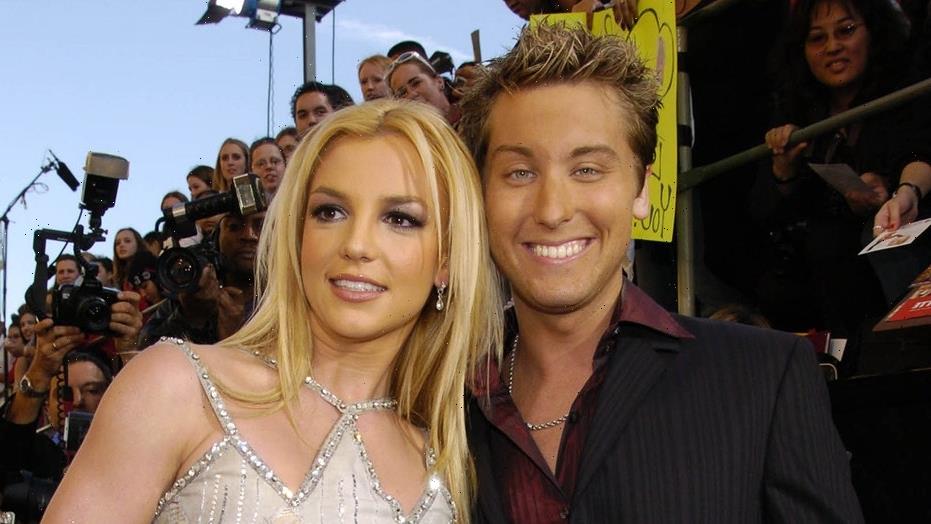One morning in mid-July, Lana M. Ciarniello, a bear biologist in British Columbia, caught a flight from Vancouver Island, where she lives, to a wildlife sanctuary in the northwestern part of the province to meet two baby grizzlies, the newest subjects in an unusual study she is conducting.
The two cubs — brothers, born this spring — were orphaned when their mother was shot. Traditionally, grizzly mothers in North America tend their offspring for at least two years, teaching them to find food and keep out of trouble before nudging them to live on their own. These cubs were far too young to survive without her.
Most grizzly cubs orphaned in North America — say, in the lower 48 U.S. states where they are endangered, or in Alaska and Canada where they are more plentiful — are shot on the spot, left to die in the wild or placed in a zoo.
These two, however, ended up at Northern Lights Wildlife Shelter, near the town of Smithers, the only place in the Western Hemisphere that raises orphan grizzly bears until they are big enough to be released back to the wild. If all goes well, the cubs will live there until next spring, fattening up and learning life skills from their human caregiver.
At that point, Dr. Ciarniello will meet them once again to fit them with battery-operated radio collars. Then, she will release them into the wilderness near where they were orphaned. Her goal is to track them for several years to see how they do, hoping that they can avoid the conflicts with humans that led to their mother’s death.
“We want to give these bears the best chance for survival,” Dr. Ciarniello said. “We want to set them up for success.”
The plan is to release bears that steer clear of humans, unlike the grizzly that attacked and then terrorized a sleep-deprived man for several nights in a row at a mining camp near Nome, Alaska, earlier this week. The man was rescued by chance when a Coast Guard helicopter happened to fly past.
Dr. Ciarniello’s project, financed by the Vancouver-based Grizzly Bear Foundation, is the world’s first long-term scientific study to determine whether raising orphan grizzlies for return to the wild makes sense. Ideally, a “rewilded” cub thrives and eventually has offspring of its own. But a less rosy scenario is that it spends a year in captivity only to die in the wild before it can add to the gene pool.
“Are we doing it just because it makes us feel good?” Dr. Ciarniello asked. She is co-chair of the human-bear conflicts expert team of the International Union for Conservation of Nature. “Or is it actually contributing to the population?”
Survival school for orphans
Even as Dr. Ciarniello is receiving two more orphans into her study, she is assessing the destinies of the seven cubs she has already sent back into the bush: two last year and five in June.
Raven, Isa and Arthur arrived at the Northern Lights sanctuary last October after their mother was killed in a collision with a truck near Bella Coola, a coastal village in the Great Bear Rainforest. Cedar and Muwin followed the next month after their mother was found eating human food near the same community and was shot. Even though the orphan cubs were from two different families, they soon became inseparable, even sharing a den. Dr. Ciarniello started calling them the Fab Five.
A lot was riding on this batch of orphans. Not only were they the second year’s subjects of a closely watched scientific study, but four were female. Angelika Langen, who founded the shelter in 1990 with her husband, Peter Langen, cherished hopes that within a few years all four would be demonstrably producing cubs, proving the shelter’s success. The Langens trained as animal keepers in their native Germany before immigrating to Canada in 1982.
“Four of them, that’s a huge boost for the program if we can keep collars on them and they survive,” Mrs. Langen said.
The five cubs spent much of their time at the shelter playing. Grizzlies are “water hounds,” Mrs. Langen said. They love to drink it, play in it and make mud with it to slather over their bodies to keep insects at bay.
“When I stand there and I watch them, how they get so excited over playing in the water pond or having this fresh branch that they can balance on their paw or shoving an ice cube around like they’re playing hockey, there is such an abundance of joy for life that I think we would all like to have,” Mrs. Langen said.
The shelter, set on 220 acres of aspen-quivering wilderness, began accepting orphan grizzlies in 2007 as a pilot project approved by the provincial government. It is one of just four grizzly rewilding programs in the world; the others are in Greece, Romania and Russia.
Since the Canadian grizzly program began, it has reared 31 cubs, plus the two newcomers. It has had to turn away many more. Last year, three cubs from Montana and three from Alberta ended up at zoos because governments balked at transporting them across jurisdictions to the sanctuary. The shelter, which currently has two full-time employees in addition to Mrs. Langen, one part-timer and some volunteers, is also home to orphan black bears, moose and deer. Its yearly operational budget of $200,000 comes exclusively from donations.
The shelter’s strategy is to teach the grizzlies how to survive in the wild. It is based on pioneering work conducted with black bears in the 1970s by John J. Beecham, an Idaho-based biologist. Dr. Beecham, who helped the Langens set up their program, is the other leader of the human-bear conflicts team at the International Union for Conservation of Nature. But the shelter has only spotty information about the fate of most of its orphan grizzlies, so the Grizzly Bear Foundation turned to Dr. Ciarniello, an independent scientist.
If her study, which began two years ago, shows that rewilding grizzlies can be successful, it might spur American researchers to set one up, Dr. Beecham said. One possible site could be the Pacific Northwest.
A key to that success is making sure the cubs do not come to see humans as friendly, so that they avoid humans and their settlements once they are back in the wild. To that end, each batch of orphans has a single caregiver rather than a nurturing team. Cubs receive only natural materials to play with; tires, balls and swings are forbidden. Protein from domesticated animals is off the menu.
The cubs also need to be as big as possible when they return to the forest. So the shelter’s protocol is to keep the orphan grizzlies out of hibernation through the winter by feeding them. The Fab Five feasted on plants gathered in season from the wild — skunk cabbage, saskatoon berries and dandelions — plus fish, moose and deer. Grapes were a special treat.
By June, as the moment approached when Dr. Ciarniello would release the five cubs, they were roughly twice the size of ones reared in the wild. The male, Arthur, was the biggest at 288 pounds. Each already had an identifying microchip inserted in its nose, a tattoo on the inner lip, tags in both ears and a radio collar fitted around the neck to track its movements by G.P.S.
Dr. Ciarniello had been through the same process the year before as she prepared the first two subjects of her study for release, the brothers Max and Moritz. But she noticed a difference this year. Because of modifications she had recommended, the five were behaving much more like cubs in the wild. They had dragged boughs into their sleeping area; they dug in their pen.
“It’s really exactly what I wanted to see,” she said. “I think these five have a pretty good chance.”
‘What’s the advantage of that?’
At last count, the United States had 1,913 grizzly bears outside of Alaska, in just four states: northern Idaho, Montana, Wyoming and a sliver of northeast Washington. That is a gain from the 700 to 800 in 1975, when the species was designated threatened under the Endangered Species Act. But it is a frail remnant of the 50,000 or so that prowled the western states in 1850, before Europeans took the land for farms, ranches and towns.
Ursus arctos horribilis was a fierce foe to settlers. With its humped shoulders, vast girth and constitutional reluctance to back away from a fight, the species was seen as a threat to both humans and to livestock. Government bounties and outright dislike eliminated them from any landscape humans wanted, pushing the survivors into a handful of mountaintops and nature reserves.
Grizzlies were eradicated from the Canadian prairies, too, and a separate subspecies in Mexico was killed off. The bears fared a little better in Europe, where three of 10 isolated European populations are now critically endangered.
Globally, though, grizzlies, also known as brown bears, are not considered threatened. The I.U.C.N.’s Red List of Threatened Species puts the total population at about 200,000, of which about half are in Russia. Alaska and parts of northwest Canada together have about 55,000, mainly in wilderness areas. In Canada, they are a species of special concern. British Columbia designates them as vulnerable and Alberta as threatened.
Despite the grizzly’s endangered status in the United States, the U.S. Fish & Wildlife Service has never had a rearing program for orphan cubs and has not considered developing one, Hilary S. Cooley, the agency’s grizzly bear recovery coordinator, said in an email. Instead, the service prefers to focus on programs to prevent orphanings. She said the number of orphans south of the Canadian border varies each year from zero to several.
Placing orphan grizzlies in zoos is becoming more difficult, said Laurine A. Wolf, education bureau chief of Montana Fish, Wildlife and Parks. Grizzlies can live in captivity for decades and need a lot of care.
“I know that it is getting more challenging to me to find a permanent placement for grizzly bears,” she said.
Alaska does not have a rehab program either. About a dozen grizzlies are orphaned there each year, said J. Ryan Scott, a wildlife biologist in the state’s department of fish and game. He can occasionally find a zoo placement. Most perish, as do half the grizzly cubs born and raised in the wild, he noted.
“It’s not intended to be cold,” Mr. Scott said, “but we think about the natural systems that happen in Alaska and you have to ask yourself: One cub, that may or may not ultimately survive if it goes through a rehab process, what’s the advantage of that?”
The practice of rewilding grizzlies is controversial among biologists. Dr. Beecham said that orphans reared at shelters could eventually be used to re-establish vanished populations in Idaho’s Bitterroot mountains and possibly other areas. But Gordon B. Stenhouse, a research scientist who leads the grizzly bear program with fRI Research in Alberta, said his studies show that translocated bears often make poor decisions.
“It would be like taking me to New York City with a $5 Canadian bill and saying, ‘Good luck. I hope it works out for you,’” he says.
Back into the wild
Tuesday, June 1, 2021, the day the Fab Five were to be released, began perfectly. Dr. Ciarniello and her team had made the 16-hour drive with the cubs from Smithers back to Bella Coola the day before. All five grizzlies were in excellent health.
“It was utopic,” Dr. Ciarniello said.
Up in two helicopters went the triplets, Raven, Isa and Arthur, sedated and suspended in slings, like the offerings of storks. They were to be set down together on a far-off estuary in the forest. Next up, the twins, Cedar and Muwin, also sedated. The helicopter rose straight up, then flew to a second site near the first.
But when the helicopter returned, it was still carrying a bear, Dr. Ciarniello recalled: “I said, ‘What the hell is going on?’ I didn’t even know which bear it was until I got there and I plugged in their radio frequencies.”
Muwin’s frequency was missing. The helicopter load had shifted catastrophically while the twins were in transit. Cedar, the heavier of the two, lurched on top of her sister, killing her.
“It really puts a damper on the whole release when something like that happens,” Dr. Ciarniello said.
This type of field work carries no guarantee of success. Last year, just days after the release of Max and Moritz, the inaugural cubs of the study, Max’s transmitter failed. Dr. Ciarniello sent out a helicopter search party and later scoured the valleys herself but found no sign of him. She still checks for pings, but nothing so far.
She learned Moritz’s fate on Oct. 24, at 16 minutes to midnight, when her phone rang with an alert from his collar. She had programmed it to text her if he failed to move for 12 hours, a setting called “mortality mode.” She sent a team of colleagues to the spot to investigate.
The first thing they found was Moritz’s collar. Then a lower jaw, shards of leg bone and entrails. They were in a food cache, most likely made by a big male grizzly, near a site Moritz was preparing as a winter den. The salmon runs had failed, the consequence of climate disturbance or overfishing. Big grizzlies were hungry, and Moritz did not know enough to stay away.
Adapting to the unknown
In Europe, so many of the fiercest grizzlies have been killed over the centuries that the species has become shy rather than confrontational, Dr. Beecham said. He calls them “gun-chosen” bears. He told an apocryphal story from Norway where, it is said, grizzlies have trained themselves to drop to their bellies and crawl across forest openings to avoid being seen.
In North America, grizzlies are constricting their roaming range if they live near humans and shifting activity to nighttime, a study published last year discovered. It’s either a survival technique to dodge humans or a sign that they are edging toward extirpation.
But humans are changing too, said Peter S. Alagona, an environmental historian at University of California, Santa Barbara, and founder of the California Grizzly Research Network in 2016. The network explores the potential of returning grizzlies to the state where they were eradicated nearly a century ago and where the creature still graces the state flag and seal.
These days, opinion polls consistently show deep disapproval of grizzly hunting, Dr. Alagona said.
“I think there is a lot to this idea that although we talk about these things in scientific and managerial terms, often what’s just underneath is these emotions about what is right and what is wrong, what belongs and what doesn’t,” he said “And a sense of justice that goes along with trying to right wrongs or fix losses.”
At the shelter, the two new cubs are adapting to their temporary home. The summer is still young; other orphaned grizzlies may end up there before the year is out.
The four surviving cubs released last month seem to be making good choices, Dr. Ciarniello said. Data from their collars show that the triplets remain together in the lowlands of an estuary, close to their release area. Cedar is alone. She has found good grizzly habitat in the subalpine and alpine areas of the forest. She roams widely. It is possible, said Dr. Ciarniello, that she is looking for her lost sister.
Source: Read Full Article



